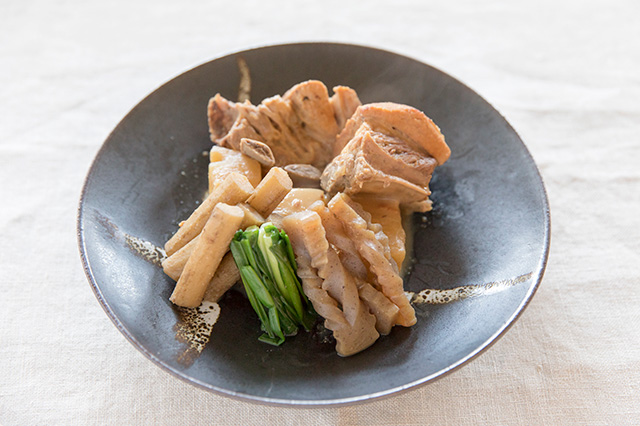Tonkotsu (Simmered Spare Rib) | Our Regional Cuisines
-
Kagoshima Prefecture
Tonkotsu (Simmered Spare Rib)
-
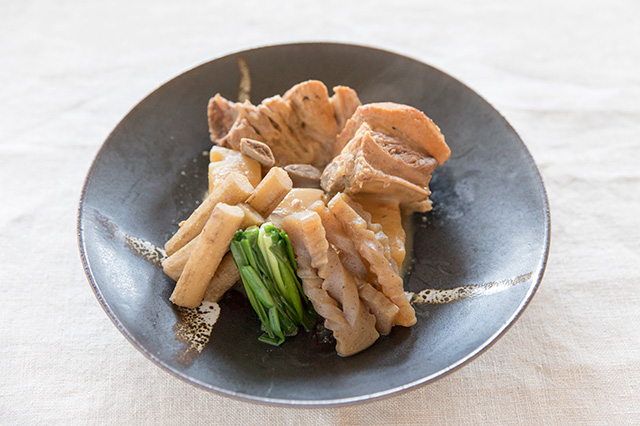
-
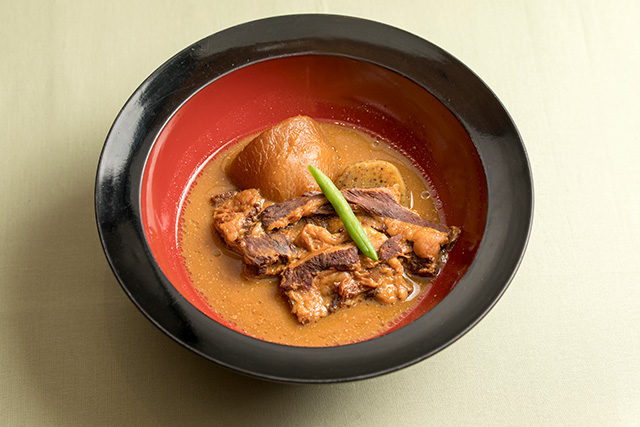
-
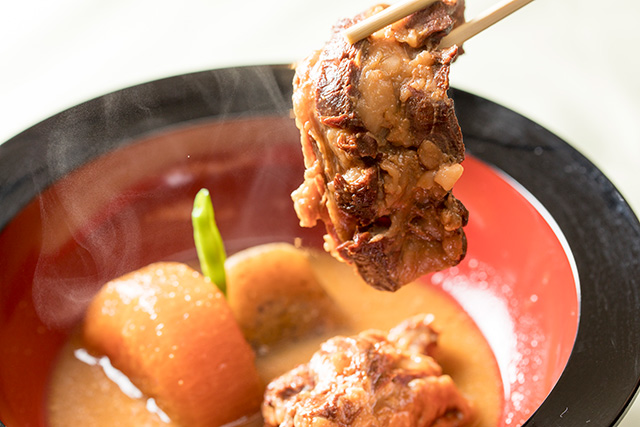
-
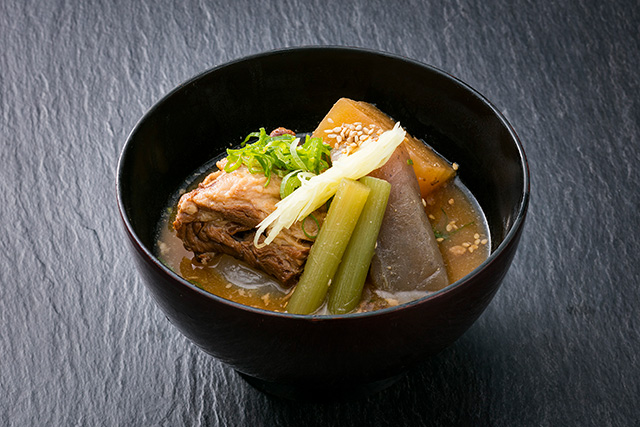
Image source: Kagoshima Prefecture
-
Main lore areas
All of Kagoshima Prefecture
-
Main ingredients used
Tonkotsu (Spare rib), Konjac(=Yam cake), Daikon radish, Gobou(=Burdock root), Shochu (Distilled Spirit), Miso, Sugar
-
History/origin/related events
‘Tonkotsu’ is a local dish simmered roasted spare rib with ‘shochu’ distilled spirit after grilled, with konjac (yam cake), daikon radish or other vegetables, miso and brown sugar. The origin of this dish is an outdoor food prepared during hunting or war by samurais in Satsuma area (current Kagoshima Prefecture), and it is said that Saigo Takamori, famous Japanese samurai in Kagoshima during the end of Edo Era, loved the dish.
Kagoshima Prefecture is famous for ‘Kurobuta’ (Berkshire), which is originated pigs transferred from Ryukyu area (current Okinawa Prefecture) by Shimazu Iehisa, the 18th head of Satsuma Domain. It was improved by crossbreeding with England Berkshire. There was a period to increase breeding fast-growing pigs and to decrease Berkshire breeding, but the current ‘Kagoshima Kurobuta’ (Kagoshima Berkshire) brand is established by promoting Berkshire pork, which is tender and rich in flavor.
In addition, producing ‘mugi-miso’ (barley miso) is flourishing thanks to its mild weather. Barley miso from Kagoshima Prefecture is sweet due to high amount of ‘koji’ (malted rice) and less salt.
Since many local ingredients from Kagoshima Prefecture, like pork, barley miso, brown sugar and potato ‘shochu’ are used to prepare ‘Tonkotsu’, it has been popular as a representative local food in Kagoshima Prefecture. -
Opportunities and times of eating habits
It is prepared at home these days regardless of seasons.
-
How to eat
Grilled spare rib on the surface, then put ‘shochu’ with high heat. After burning off the alcohol, add water and simmer for a while. Heating pork with ‘shochu’ makes pork less odor and more tender. Then, add other ingredients like daikon radish, gobou (burdock), and konjac. Add brown sugar and miso, then simmer for a while with removing scum. Ready to serve once spare rib becomes tender and absorbs flavor.
-
Efforts for Preservation and Succession
(Outline of the traditions, the preservation society, social media use, modern approaches to commercialization)
It is still commonly prepared at home. Each family has its own flavor passed by from its ancestors. Also, it is served at school lunches and popular as a daily dish.
Contact
Food Cultures Office, Overseas Market Development and Food Cultures Division, Food Industry Affairs Bureau, Ministry of Agriculture, Forestry and Fisheries
Tel:+81-3-3502-5516






